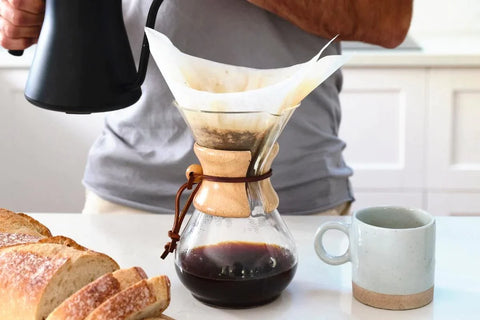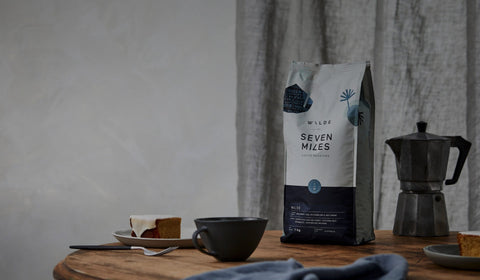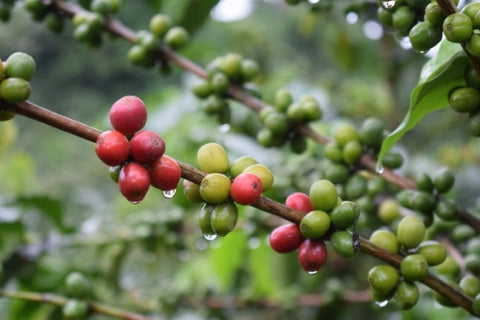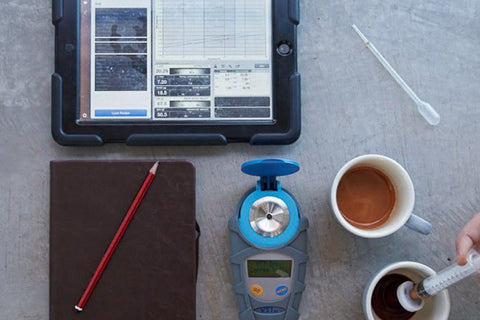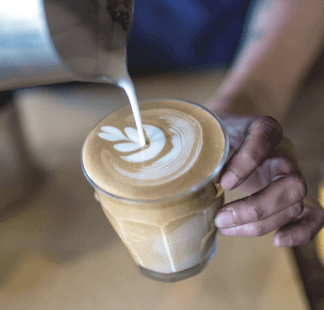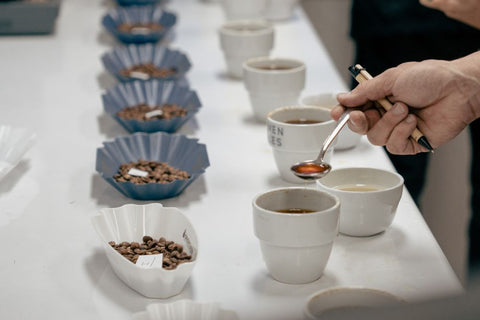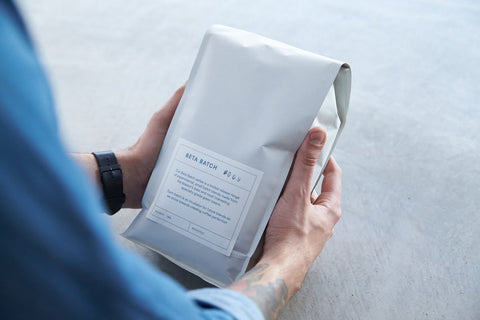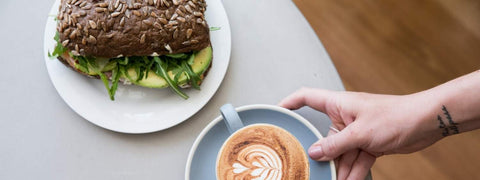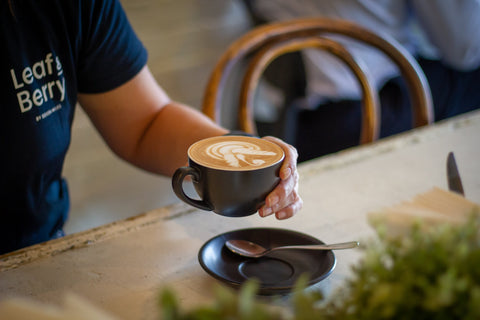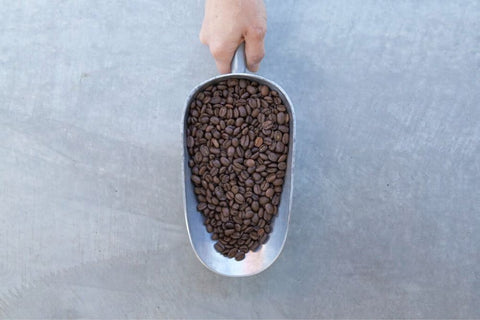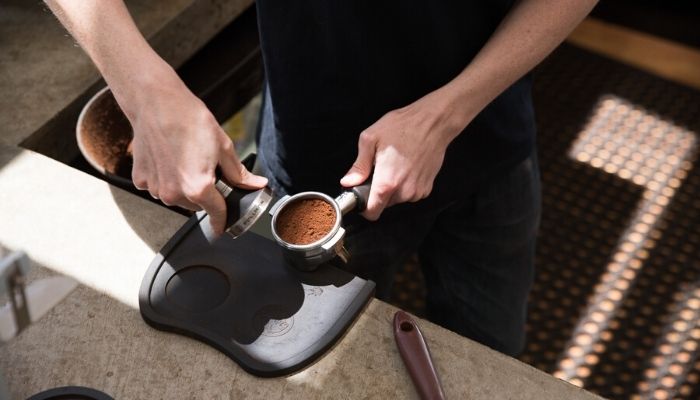As baristas, we like to think that our technique is what makes the difference. We tell people that making great coffee is combination of ‘Art & Science’. But is that really true with tamping?
In this article we’ll answer the most common questions people have about tamping & we’ll run through some practical tips on getting the best results with your coffee.
When we’re training baristas on the fundamentals of making espresso, a few questions about tamping keep coming up:- How hard should you tamp coffee?
- Does level tamping really matter?
- How do you tamp coffee correctly?
Now we don’t want to make assumptions – so we put on some lab coats, performed a series of tests and got ourselves some data.
How hard should you tamp coffee?
Some people say that you need to tamp really hard, while others say the pressure doesn’t matter, some say 15lbs/6kgs some like to change their tamp pressure every time.
Who’s right? this sounds like a job for science.
For our first test, we wanted to find out if tamping harder changed the flow rate of the espresso or if it improved the consistency from shot to shot. To make sure our results were consistent, we used the Puqpress.
The Puqpress is an automated tamping machine which tamps at an exact pressure every time.  We pulled a total of 25 shots of espresso at 10, 20 & 30kg of tamping pressure to average out the results.
We pulled a total of 25 shots of espresso at 10, 20 & 30kg of tamping pressure to average out the results.
We used 3 different styles of espresso blend for these tests to make sure the origins or the roast profile wasn’t a factor.
In short, we found that higher tamping pressure made no difference to the extraction. The extraction times weren’t longer for the 30kg tamping, nor were they more consistent from shot to shot – they were exactly the same.
So, if tamping harder doesn’t make a difference, what’s the point of tamping at all? It’s really about removing the air pockets and forcing the water to work its way evenly through the bed of coffee.
If the water finds an easy opportunity to work through one of these gaps, this is what we call ‘channeling’. We can see this happening if we don’t tamp the coffee at all. You’ll see holes in the bed of used coffee, the espresso will flow more quickly & it will probably taste pretty nasty too. So, our goal here isn’t to press down hard, it’s more about providing a compact surface to make sure the water does its job properly.
This brings us to our next question. 
Does level tamping matter?
Most barista trainers will be careful to point out that you should always tamp level with the basket. But we wanted to test if it has a measurable effect on the flow or the consistency of our espresso shots when we don’t get it right.
Unfortunately, our robotic tamper only tamps level, so we had to use old-fashioned humans for these tests.
For this test we brewed a series of espresso shots with extreme tamping angles of 10 degrees & then another set at an angle of 20 degrees. We compared these to espresso made using a level tamp of the same pressure to see how they compare. This time, the differences were obvious right away.
The shots made using an angled tamp had a less consistent flow rate than the shots made with a level tamp.
The used coffee also showed obvious signs of channeling - and most importantly, in our blind taste tests, the espresso made with the angled tamp just didn’t taste as good.  Now, the negative results were more obvious at 20 degrees than at 10 degrees, so the conclusion is pretty obvious: the more level you keep your tamping technique, the better your coffee will be.
Now, the negative results were more obvious at 20 degrees than at 10 degrees, so the conclusion is pretty obvious: the more level you keep your tamping technique, the better your coffee will be.
Of course, there are a number of devices out there that make sure that you always tamp level, so that’s one way you could fix this problem …or you could just make sure you pay attention to your technique, making sure to line up the tamp level with the basket before you press down.
Tamping Tips: How to tamp coffee correctly
Now that we understand these results, let’s run some practical tamping tips to get consistent results with your coffee….and don’t end up with a repetitive strain injury.
First, make sure you hold the tamp in a way that’s not going to put pressure on your wrist. For most people, it’s best to hold the tamp in your hand like a tennis racket, or like a microphone if that’s more your thing...  You want to wrap four fingers around the handle and place your thumb on the base as a support. It’s usually best not to hold the tamp like you’re stamping a letter…that’s a recipe for pain down the track…
You want to wrap four fingers around the handle and place your thumb on the base as a support. It’s usually best not to hold the tamp like you’re stamping a letter…that’s a recipe for pain down the track…
Now if this feels uncomfortable, I’d also recommend this method as an option. I like to put my fingertips to the edge of the tamp where I’m touching the tamp & the basket whilst tamping. This ‘feel’ method helps you to maintain an even, level tamp.
Next, I’d recommend that you rest the group handle against the corner of the bench, try to avoid using the spouts as that’s a recipe for either damaging the spouts or even picking up any loose grit that might be on the bench and transferring that to the cup via the extraction.
Then, stand side on to the bench, get your elbow up and this will ensure your wrist is straight and will cause you to engage your shoulder. Remember, as we showed earlier, you don’t need lots of pressure. Just a gentle lean with your body, enough pressure to crush a kiwifruit is plenty… 
A couple of things to avoid…
1. Tapping the basket
Some people feel they have to tap the handle after tamping to loosen coffee from the walls of the basket. Apart from damaging the tamp and the handle, it can also create gaps at the point of impact in the bed of coffee, which makes channeling more likely.
If you’re really concerned about the coffee stuck to the wall of the basket, you can get a slightly larger size tamp which more closely fits the basket you’re using. This will make sure that the coffee is tamped all the way to the edge right from the start.
2. The twist
Some baristas add a twist to the tamp movement to ‘polish’ the bed of coffee. To be fair, this is unlikely to cause any issues with extraction, but it is not an essential movement to make, particularly if you’re making hundreds of coffees a day.
3. Changing your tamp to control the flow
This is another tamping idea that crops up often in training sessions: “I can change my tamp pressure to increase or decrease my shot times throughout the day.”
While the pressure you exert when tamping feels like a lot, it pales in comparison to the water pressure from the pump of the machine. In reality, the impact of a harder tamp is unlikely to change the flow rate at all. The real solution is to adjust your grinder coarser or finer to stay on recipe, and keep your tamping pressure as consistent as possible to prevent channeling.
This is just the start of a series looking into the details & the science of espresso technique. In part 2, we dive into the rabbit hole of espresso distribution - Do you really need a special tool or a certain technique to distribute the coffee before tamping? In part 3, we look at espresso pressure - is 9 bars really the ideal brew pressure for espresso?
